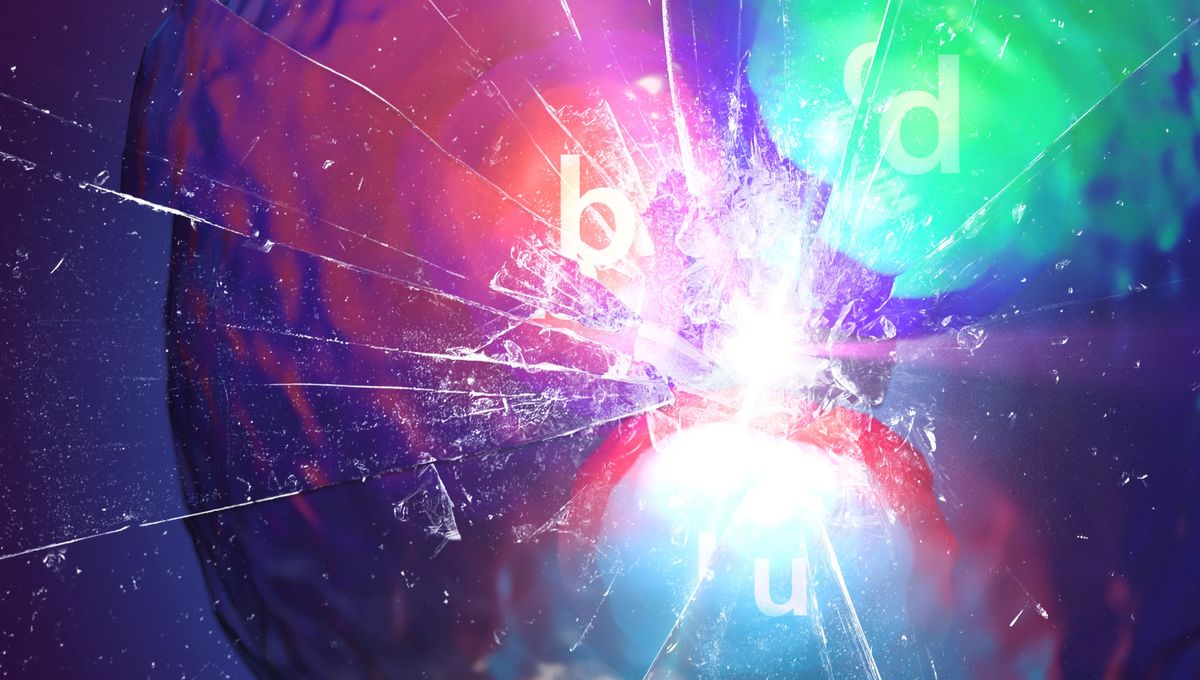
Particles and antiparticles have opposite charges, and they annihilate if they interact, turning into pure energy. In the Big Bang, an equal amount of matter and antimatter formed, but some process must have given matter a boost, leaving just a tiny fraction of antimatter in the cosmos today. The reason for this is not clear, and several experiments are looking for an answer. The LHCb at CERN has just announced some incredible observations, taking us a step closer to it.
Baryons are subatomic particles made of an odd number of quarks. The protons and neutrons that exist at the center of every atom are baryons since they have three quarks. There are also particles called mesons, made of a quark and an antiquark. Since the 1960s, we have known that these particles violate the so-called charge-parity (CP) symmetry. The antimatter counterpart behaves in a different way.
It had long been suspected, with theoretical studies backing this up, that the same would happen for baryons. However, demonstrating that it was the case took a long time. The Large Hadron Collider (LHC) and its dedicated experiment to study the difference between matter and antimatter had to gather a lot of data to finally produce the evidence of CP violation.
“The reason why it took longer to observe CP violation in baryons than in mesons is down to the size of the effect and the available data,” LHCb spokesperson Vincenzo Vagnoni said in a statement. “We needed a machine like the LHC capable of producing a large enough number of beauty baryons and their antimatter counterparts, and we needed an experiment at that machine capable of pinpointing their decay products. It took over 80,000 baryon decays for us to see matter–antimatter asymmetry with this class of particles for the first time.”
The LHCb collaboration saw this baryon decay in a heavier cousin of protons and neutrons called the beauty-lambda baryon Λb. This particle is composed of an up quark and a down quark – just like the other two – but the third quark is a bottom (or beauty) quark. The team compared this particle’s decay to the decay of the anti-beauty-lambda baryon, and found a statistically significant deviation.
The standard model of particle physics has complex predictions, but their precision is not yet at a level that would allow comparison with the observations. Still, the CP violation predicted for all baryons is a fraction of what you’d need to explain the lack of antimatter in the universe. It is possible that the rest comes from physics beyond the standard model.
“The more systems in which we observe CP violations and the more precise the measurements are, the more opportunities we have to test the Standard Model and to look for physics beyond it,” added Vagnoni. “The first ever observation of CP violation in a baryon decay paves the way for further theoretical and experimental investigations of the nature of CP violation, potentially offering new constraints for physics beyond the Standard Model.”
The study is published in the journal Nature.
Source Link: First Known Observations Of Matter-Antimatter Asymmetry In Special Particle Decay